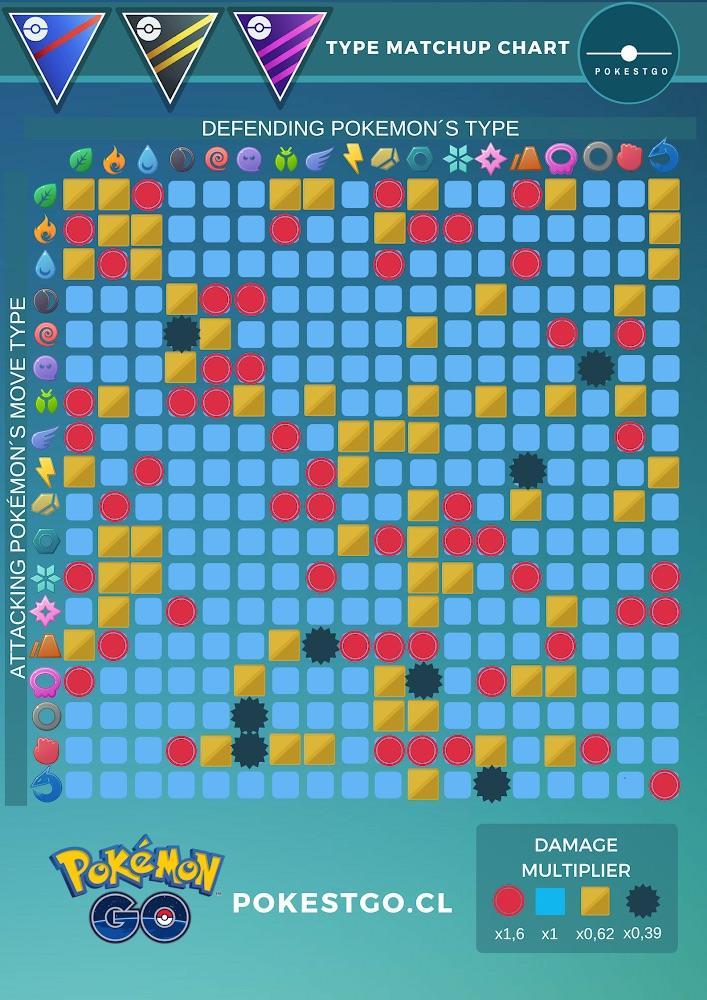The Pokémon saga, like other sagas (especially RPGs) has some kind of affinity or element, which in this case are called ‘types’, which represent some element of nature or characteristic.
To understand its operation and usefulness, we must understand the relationship between these ‘types’, which in the Pokémon saga have different effects depending on what we are facing, can be super effective, ineffective, weak, resistant or immune between them, as we explained in the case of Pokémon Sword and Shield here.
Well, this time we bring you the “table of types”, a scheme that allows us to see easily the weaknesses and strengths that have each type in Pokémon GO, mobile device game in which this mechanics varies a little with respect to the main deliveries of the saga, as you will see below:
Beta Azumarill:
— Dr. Lava's Lost Pokemon (@DrLavaYT) August 20, 2020
Azumarill's earliest design was very different. However, gold might've never been intended as its final color, but was just using Baby Doduo's color palette as a placeholder.
1. Beta sprite recreation by @RacieBeep
2. Beta sprite, final sprite
3. Final artwork pic.twitter.com/eYvEojZgHy
In this first image, published by the official profile of Pokémon GO on Twitter, you can appreciate the types of movements that are super effective against other types, whose only exception is the ‘normal type’, since none of their attacks are super effective against any type.
Finally, in this second table made by the medium Pokestgo.cl you can appreciate with much more accuracy the type of effectiveness that each type has against the rest (left: attacker type; above: type that receives the damage). To do so, four different signs can be differentiated, which are marked as “damage multiplier”.
- Red: Represents that the movement used is super effective, that is, that the damage done increases by 60% (it is multiplied by 1.6).
- Blue: Represents that the movement used causes a neutral effectiveness, i.e. the damage is not altered by the type.
- Yellow: Represents that the movement used is not very effective, that is, the damage done is reduced by 38% (it is multiplied by 0.62).
- Black: In Pokémon GO there are no “ineffective” movements as in the main saga, so these attacks affect, although their damage is drastically reduced, making 61% less (multiplied by 0.39).
